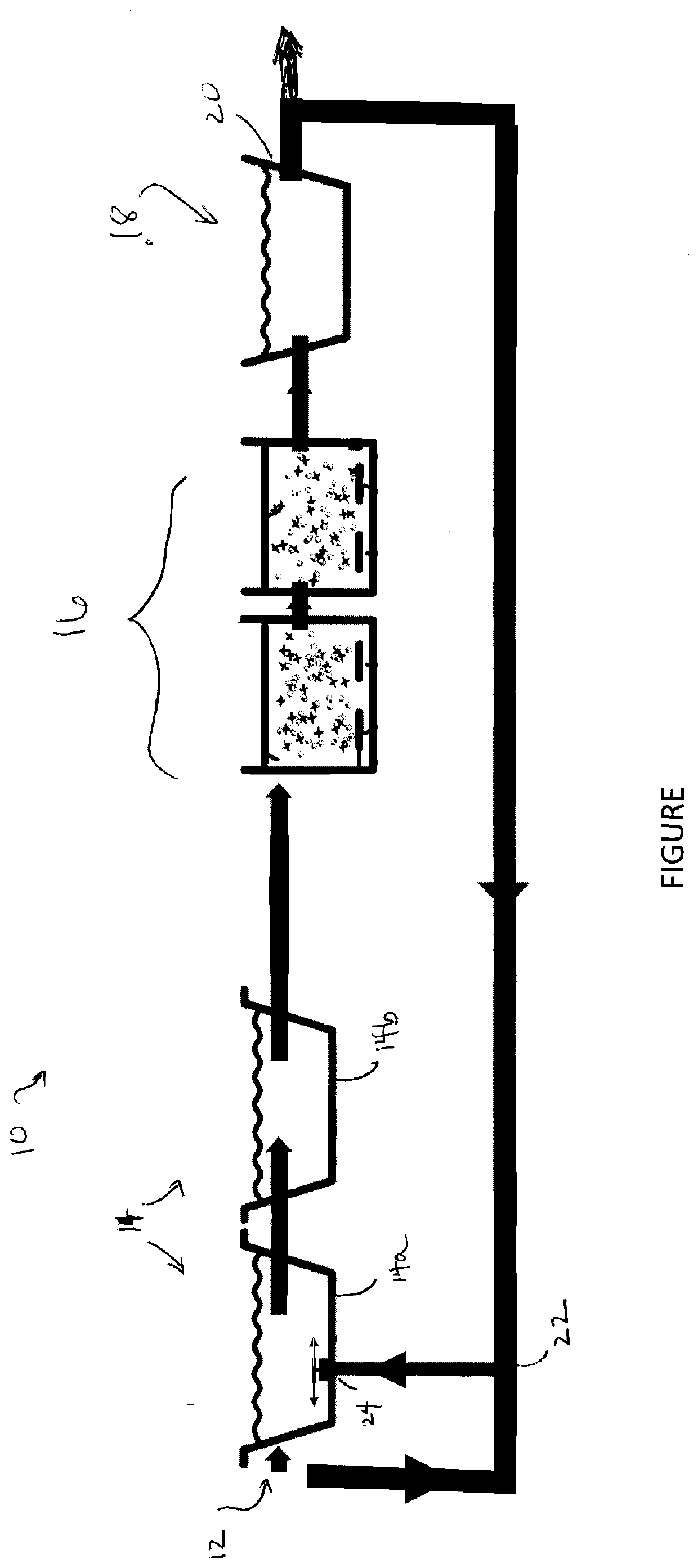Lagoon-Based Wastewater Treatment with Denitrification
a technology of denitrification and wastewater treatment, which is applied in the direction of biological water/sewage treatment, sustainable biological treatment, chemistry apparatus and processes, etc., can solve the problems of lagoon owners who are particularly difficult to meet the total nitrogen (tn) limit, and achieve the effect of promoting denitrification, minimal footprint requirements, and minimal pumping costs
- Summary
- Abstract
- Description
- Claims
- Application Information
AI Technical Summary
Benefits of technology
Problems solved by technology
Method used
Image
Examples
Embodiment Construction
[0014]In this disclosure, the term “lagoon system” will be used as a broad term to refer to wastewater lagoon(s), per se, as well as to downstream processing apparatus such as nitrifying reactors, clarifiers, sterilization reactors, etc. The initial chambers or cells in such systems, by themselves, will be referred to as lagoons.
[0015]The present invention provides an approach for new or existing wastewater lagoon systems—either aerated or non-aerated—to cost effectively meet more stringent effluent discharge requirements, including improving treatment of Ammonia, Nitrite+Nitrate, Total Nitrogen, BOD, and TSS. With the inventive approach to treating wastewater, a new or existing lagoon system will be able to accept raw wastewater from either a municipal or industrial source and, through both aerobic and anoxic processes, achieve approximate effluent of 10-20 mg / L BOD / TSS, <1 mg / L Ammonia, and 5-10 mg / L Nitrate or Total Nitrogen without the need to build a fully mechanical treatment ...
PUM
| Property | Measurement | Unit |
|---|---|---|
| retention time | aaaaa | aaaaa |
| retention time | aaaaa | aaaaa |
| dispersion | aaaaa | aaaaa |
Abstract
Description
Claims
Application Information
 Login to View More
Login to View More - R&D
- Intellectual Property
- Life Sciences
- Materials
- Tech Scout
- Unparalleled Data Quality
- Higher Quality Content
- 60% Fewer Hallucinations
Browse by: Latest US Patents, China's latest patents, Technical Efficacy Thesaurus, Application Domain, Technology Topic, Popular Technical Reports.
© 2025 PatSnap. All rights reserved.Legal|Privacy policy|Modern Slavery Act Transparency Statement|Sitemap|About US| Contact US: help@patsnap.com

